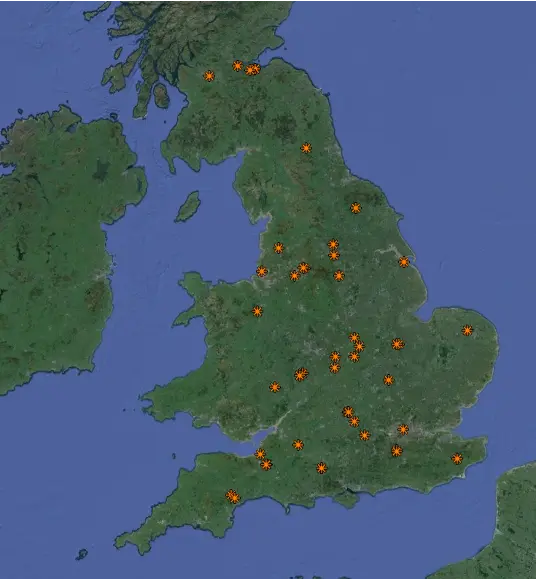Magnet fishing and UXO
Magnet fishers often encounter mundane items such as old trolleys and scrap metal. However, they can also come across dangerous items like weaponry or ammunition. We explain the origin of the risk and what to do to mitigate it.
With people furloughed and businesses closed during 2020 and 2021 because of Covid, many of us found ourselves with more time on their hands. This led to the exploration of new hobbies – such as baking banana bread!
Also, the allure of hidden treasures in the UK’s waterways attracted many people to magnet fishing - which too many people still practice today. In this article we will clearly explain the dangers magnet fisherfolk potentially expose themselves to.
What is magnet fishing?
Magnet fishing involves casting a strong magnet, attached to a rope, into a body of water in the hope of retrieving metal objects.
The potential surprise of interesting finds draws enthusiasts to this activity. While magnet fishing was already ‘a thing’, its low cost and a strong desire to spend time outdoors during the covid period caused a significant increase in its popularity.
Common and dangerous finds
Magnet fishers often encounter mundane items such as old trolleys and scrap metal. However, they can also come across dangerous items like weaponry or ammunition.
Sadly, the UK’s waterways have been used to dispose of unexploded ordnance (UXO) from Allied armed forces’ training and storage – and they are potentially home to unexploded air dropped ordnance from the War.
This means that magnet fishers sometimes find legacy ordnance - which poses serious risks.
One notable example:
In July 2020, a 6-year-old boy discovered a World War II mortar shell while magnet fishing in the River Mole. The police had to conduct a controlled explosion to safely remove the risk.
This incident highlights the potential danger of live ordnance, which can still be hazardous under certain conditions.
Why is there ordnance in UK waterways?
It’s estimated that approximately 20% of the UK’s land mass has been used by the military at some point. This means that ordnance has been handled, used, or stored across large parts of the country.
After conflicts, or when military sites ceased operations, it was often necessary to dispose of ordnance quickly. Unofficially disposing of items into waterways was a common practice.
The rise in magnet fishing has led to the rediscovery of these items.
Dangers of ordnance in waterways
Ordnance found in waterways can remain dangerous despite years of submersion. The chemicals in explosives can stay stable, and corrosion might weaken the outer casing while leaving the explosive material inside unaffected.
Even small amounts of explosive material can cause severe injury or death if mishandled.
Impact of finding UXO while magnet fishing
Finding ordnance while magnet fishing is highly dangerous and at the very least, it can cause significant disruption. It will lead to the establishment of local cordons, it can cause and road closures, and ultimately it can result in local disruptions.
Police involvement is required, diverting critical resources from essential duties.
Legislation for magnet fishing
While magnet fishing is widely practiced, it is technically prohibited in many places.
The Canal & River Trust’s General Canal Byelaws of 1965 state that no person shall “dredge or remove coal or other material from any canal” without authorisation.
The Trust explicitly prohibits magnet fishing due to its dangers, though it can be practiced on private land with the owner’s permission.
What to do if you find UXO while magnet fishing
If you do insist on magnet fishing and you find suspected UXO, immediately call the police and move away from the item, warning others to stay clear as well.
Do not handle the item, and follow the advice of emergency responders. It’s not funny or clever to discount this advice.
Below is a map displaying a sample of the locations of UXO finds via magnet fishing:

Magnet fishing might be considered an exciting and rewarding hobby for some (more so than baking banana bread – we’ll give you that!), but it also comes with significant risks due to the potential presence of UXO in UK waterways.
So, please - always prioritise safety and follow legal guidelines.
For advice about the mitigation of unexploded ordnance risk – trust Igne for an end-to-end service. From preliminary risk assessment through detection and demolition, we are your commercial UXO professionals.
Other articles of interest

Expert Opinion for the BBC
As news coverage of the Plymouth bomb find continues, Igne's Explosive Ordnance Disposal (EOD) and research experts have been cited by the BBC and regional press, and have provided insight into what the Army may do next, and how insurers may involve an 'occasioned by war' clause to avoid paying out for any potential damage.

How Igne’s UXO risk assessments keep clients on time and budget
Igne’s research team create detailed UXO risk assessments so clients can determine the risk level of their sites.


